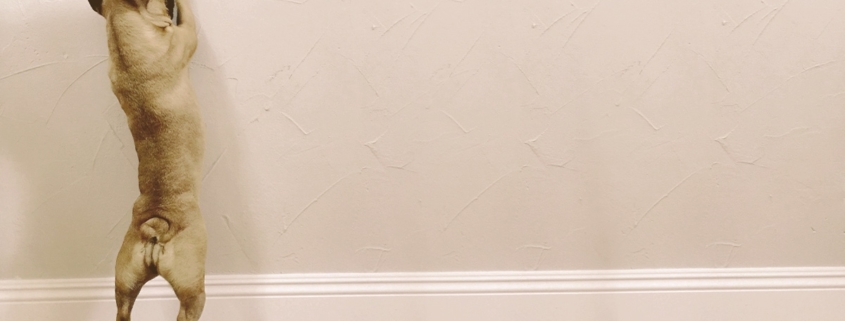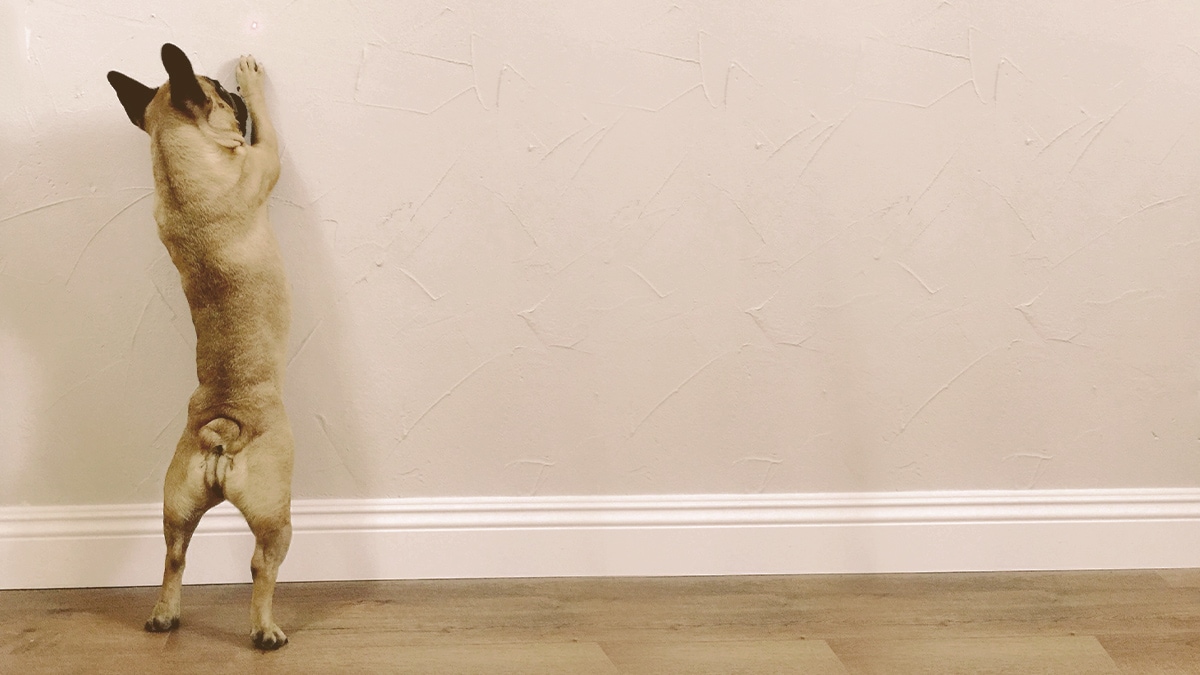
How to Get Your Dog to Stop Scratching and Chewing Walls
Alex Vicente • Updated on August 1, 2023
- This review contains affiliate links. Read more here.
- Not a substitute for professional veterinary help.
When you add a pet to your home, it is your responsibility to give them the best care and work through any issues that may arise.
While offering food, water, and regular attention is not challenging for most, some negative behaviors can be very hard to deal with.
A big issue many have with dogs specifically is that they will scratch the walls.
Of course, this wall scratching can cause damage and unsightly marks around your home.
You will want to figure out the cause of this scratching and work on ending these issues.
Luckily, we have created a list of some of the best ways you can get your dog to stop scratching the walls.
Table of Contents
Start by Offering a Distraction
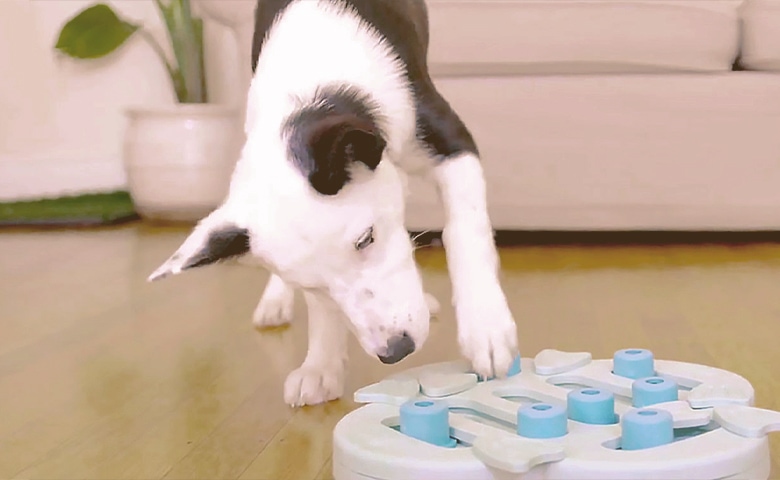
If your dog is scratching your wall, it could be because they are bored, lonely, or a variety of other issues. The best way to stop your dog from scratching or tearing into walls is by offering a distraction. You can easily distract your dog from chewing on the wall and give them something more appropriate.
- Often dogs scratch because they need to use the restroom, instead of offering a bell for them to ring when needing to go outside.
- If they are scratching due to boredom, offering a toy can be a great option.
- Some dogs simply scratch at the walls because they have nothing else to do. Taking your dog on a walk is another great option to avoid these behaviors.
Regardless of how you distract your pup, offering distraction is the easiest way to stop this negative behavior. A busy dog is often a better-behaved dog.
Create an Unsatisfactory Noise

One way to stop your dog from doing this behavior is to create a noise they do not like. This will stop the scratching and be an annoyance but will not cause the dog any bodily harm. It is best to only make said noise when the unwanted action is taking place.
An easy way to create a noise that your pet is sure to dislike and will distract from these behaviors is by putting pennies into a bottle. These will create quite a loud sound and will stop your dog in its tracks. You can place five to six pennies in a simple plastic bottle and shake this when the negative behavior begins.
Another similar option would be to blow a loud whistle or loudly clap when the scratching begins. This will stop your dog from scratching, and they will begin to associate this negative sound with the negative action. This is basic conditioning, and it is important that you are only making these sounds when your dog is scratching.
Ignore the Behavior

While this may seem counterproductive, it can actually be exactly what you need to do to correct these negative behaviors. When your dog is scratching at the walls, it could simply be because they know it will get your attention. Of course, you want to give your dog as much attention as possible, but it is not always an option to give them constant attention.
Before ignoring this behavior, you do want to ensure that your dog has everything that they need. Some things to keep in mind are:
- Do they have food? Water?
- Have they recently gone outside to the restroom?
- Have they gotten plenty of attention and exercise for the day?
- Do they have toys and other play options available?
If your dog has all of its basic needs met, start by ignoring the behavior and show the dog that this will not warrant a reaction. Stop what you are doing, turn your back, and avoid eye contact or speaking to the pet. Do this for some time until the dog stops scratching and then give them attention, stop offering attention if scratching begins again.
They May Grow Out of It

If your dog is younger, this may simply be an issue that is caused by age. Many puppies will scratch or even chew at the walls. This can be due to teething or simply because your dog has not yet been trained on what behaviors are correct and incorrect.
While many dogs will outgrow these behaviors and this is something that takes time, it is important to teach your pup the proper behaviors. If you do not redirect your dog or offer some form of discipline when scratching occurs, it will not stop these behaviors. It can be frustrating, but simply remain patient with your pet and work on redirecting these negative behaviors.
Assess Your Dog for Pica

One thing many do not realize is that there can be a deeper physical issue that is the cause of this behavior. If your dog is noticeably chewing the walls or scratching the wall and eating drywall, pica may be the cause. This is an issue that many dogs and cats suffer from each year.
Pica is a bit confusing for those who have never dealt with the illness, but it is essentially a psychologically compulsive condition. This will cause your dog to eat things that are not otherwise meant to be eaten. Some other commonly ate items that are a sign of pica are:
- Stones
- Fabric
- Paper
- Feces
- Grass
- Sticks
- String
- Dental Floss
- Plastic
- Balloons
If you notice that your dog is eating several abnormal items around your home or is displaying other odd behaviors, a vet assessment is key. Pica can be hard to treat in most dogs and it requires professional help. Some behavioral training may be needed to deal with this completely.
Seek Professional Help

This method and the previously mentioned are both very similar. In some cases, if you cannot find an external cause for the issue, it may be best to simply contact a vet in your area for additional help. They may be able to get to the root of the problem or lead you in a positive direction.
One thing is important while waiting to discuss this with your vet and that is to never hit or overly scold your dog. While you may want to alert your dog at the time of the scratching, never do this well after the fact. Most dogs do not remember what they have done previously in the day and hitting, or yelling will just cause fear.
It can be tricky to know exactly how to handle this behavior with your pet, but you will want to seek professional help if you feel it is out of your control. You can work with a vet or be recommended to a pet trainer for additional support. This can be pricey but, in most cases, can be very beneficial for both you and your pet.
Try Adding Anti-Scratch Paneling
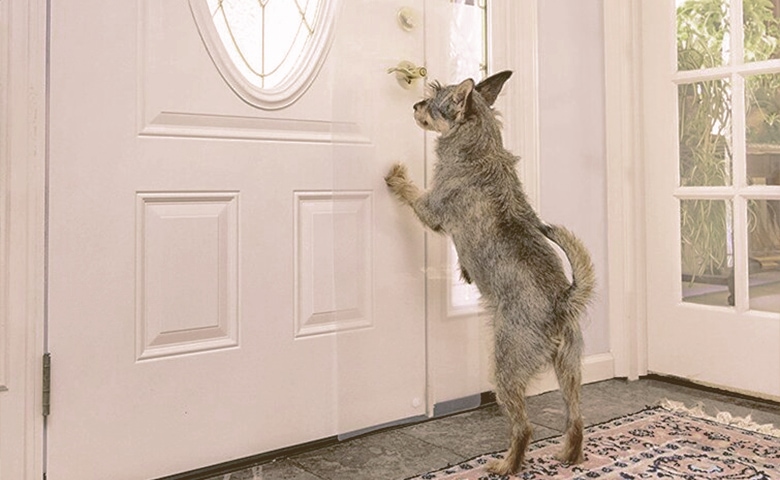
If your walls are becoming damaged and this issue is persistent, you will want to take more drastic actions. You can use a variety of items to create anti-scratch walls. This does require a bit of handy work and can change the look of your home, depending on what you choose to use for the project.
Some available options that you can use on your walls that help prevent scratching and chewing are:
- Add a layer of shower surround plastic to your walls. This is a slicker material that comes in several basic colors, making it match many décor options and not highly noticeable. It is hard for a dog to scratch and holds up well.
- You can add acrylic plexiglass that has been cut to the size of your drywall. There are also fiberglass reinforced panels that can be easy to cut and install. Either of these options also holds up well against scratching.
- Another option is to purchase a scratch shield. This is sold online and is cut and attached to the walls. This will also work well to stop your dog from scratching.
Of course, this will cost you a bit of money and can change the look of your home. However, if you have exhausted most other options, this could be the right choice.
Call Pest Control
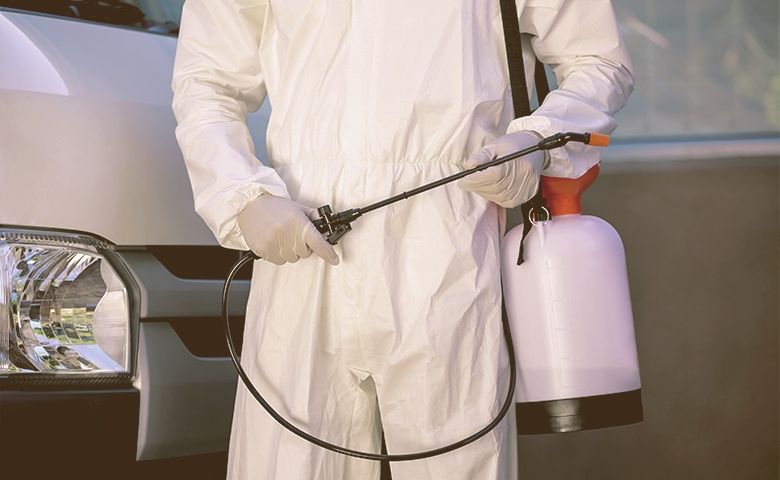
One reason that dogs scratch walls is because they simply know something that you do not. While no one wants to consider they have mice or other pests, it is almost always a possibility. If your dog senses pests in your walls, it can cause them to scratch in hopes they can get to these pests.
Often, dogs can hear something as small as termites and this can cause them to drive themselves crazy scratching to reach the noise. Dogs often have much keener hearing than humans, which means they can hear pests that humans cannot. If you think this may be an issue in your home, you will want to reach out to a local pest removal team.
Rearrange the Room
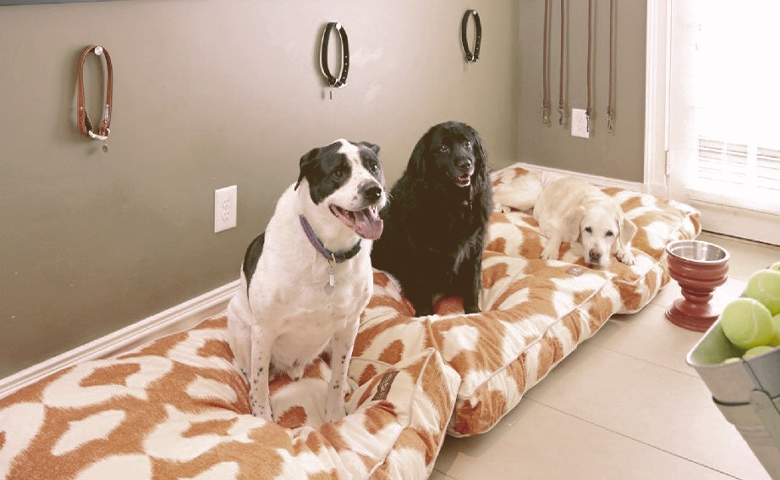
If you find that your dog is scratching in one area specifically, it may be best to rearrange the room. While this may not stop your dog entirely, it can lower the amount of scratching that you see and may save your walls. This mainly only works on dogs that are scratching in one specific area and you clearly cannot block off every wall.
In a living room area, this may be as simple as moving your couch onto the wall your dog often scratches. In other areas, you may have to get more creative with blocking your dog from the walls. This often works best with some of the other methods on our list but is a great way to lower scratching while getting to the root of the problem.
Ensure Your Dog is Getting Enough Exercise

One major reason for dogs scratching on the walls in your home is because of boredom or lack of physical exercise. This can be hard to judge as all dogs need varying amounts of exercise, but most breeds need a certain minimum of exercise hours each day. If you are not getting your dog out of the home and providing them exercise daily, this should be changed immediately.
A busy dog and a sleepy dog will not have time or energy to dig into the walls. Not to mention, exercise releases adrenaline, which can help your dog with anxiety or other behavioral issues. Some simple exercise options you can provide your dog with are:
- Take them on a daily walk around the neighborhood.
- Go out in your hard and offer a simple game of fetch.
- Some dogs enjoy swimming, and this is a great way to offer full-body exercise.
- If you have a fenced-in yard, offering some outside time when you notice the scratching can be a great alternative.
Essentially, you will want to offer at least thirty minutes a day of vigorous exercise for your dog. If you do not feel that your dog is getting this much exercise daily, this can be a cause of the scratching. Offering more exercise daily can help lower the amount of scratching you see daily.
Offer Mental Stimulation

Once again, if your dog is bored it can lead to this unwanted scratching. Some dogs do this scratching as a way to stimulate their mind and end boredom. However, offering additional mental stimulation can be a great way to lower the amount of scratching that you see each day.
Purchase a puzzle game that your dog can complete when bored. There are several products on the market today that use treats to stimulate your dog’s mind. Keeping your dog’s brain active will expend excess energy and can lower anxiety.
You will find that offering additional exercise and mental stimulation is the best way to lower the negative scratching behavior. By offering these ways to stimulate your dog both mentally and physically, they will be more content when in the home. This does require a bit of work on your part but can be very beneficial when it comes to stopping this scratching.
Spend More Time with Your Dog
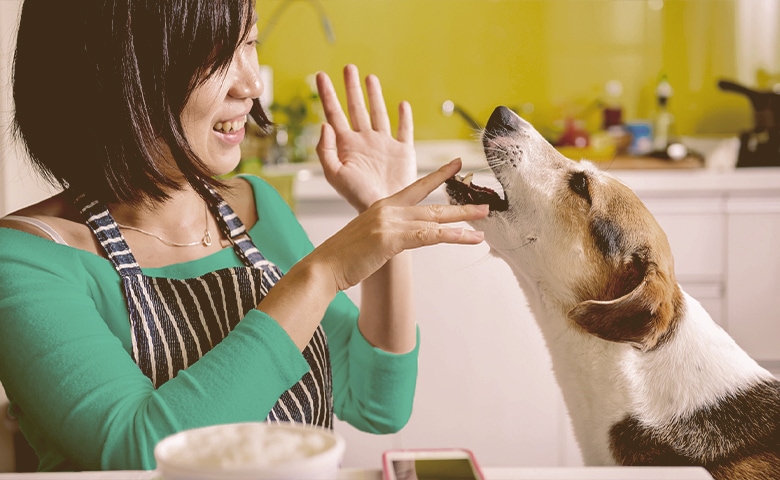
It can be challenging to give your dog as much time as you would like as a pet owner. The real problem arises if you are not spending enough time with your dog and this leads to them feeling unsafe or not as content. When owners are not actively in their dog’s life, this can cause the pet to act out or seek attention.
Most dogs will adapt to the owner’s schedule and will become used to your daily work or times out of the home. However, if you have recently changed this schedule, it can lead to your pup becoming lonelier, which can cause negative behaviors. This could end once your dog is adapted to this new routine or it could require additional work.
Some ways that you can offer your dog additional bonding time are:
- Set aside time each day to specifically play with your dog. Whether this is a simple game of fetch or something a bit more detailed, daily time devoted to your pet can help.
- Hire a dog sitter that can spend time with your pup when you are away for long hours. Whether this is a professional or a family member, having someone check on your dog can be very beneficial.
- Continue to offer regular exercise for your pup and daily walks, as mentioned above.
- Avoid going on extra trips or spending additional time out of the home if a new schedule is in place. Allow your pet plenty of time to get used to a new schedule.
To humans, our pet is one part of our daily life but to our pets, we are their entire life. Offering plenty of bonding time and quality care can help decrease negative behaviors.
Try Crate Training
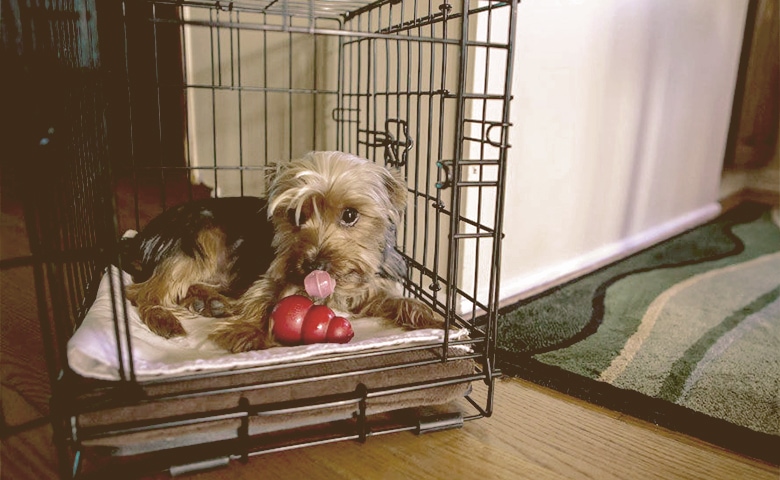
If you notice that your dog is primarily doing this behavior when you are not in the home, it may be best to provide proper boundaries for your dog. This can be even more beneficial if you are dealing with a new schedule and your dog is struggling while you are away. Offering a safe place for your dog like a crate can be a great option.
Often, crate training works best if you begin it early on in your dog’s life. However, this can be implemented at practically any time and can provide a safe place for your dog while you are away. If you do hope to crate train your dog, you will want to get a crate that is large enough and slowly implement this ensuring your dog feels safe.
Once your dog is comfortable in its crate, you can leave them in the crate while you are away. This can lower the amount of scratching you see and can create a safe space that your dog can go to as they see fit. Eventually, you may be able to leave the crate open while you are away, and your dog will no longer scratch.
Keep Expectations Realistic

One thing that you must keep in mind is if your expectations are realistic for your pet. If you know that your dog is scratching the walls while you are away, it may not be realistic to expect them not to do this if you are away for the majority of the day. Instead, you may need to change your life to fit your dog’s needs.
Dogs that are scratching due to boredom, anxiety, fear, etc. need additional support from their owner. If you are not offering this support as it does not fit your schedule, this is not your dog’s fault. This is even truer for those who have younger dogs or puppies, as they cannot go long periods of time on their own.
Once again, if your dog needs additional support throughout the day, find someone that can come to your home and walk your dog or spend time with them. Most dogs cannot go the majority of the day on their own and this can lead to unwanted behaviors.
Try to Find the Root of the Problem

While we have touched on several of the reasons why your dog may be doing this unwanted action, it is best if you can get to the true root of the problem. This can be challenging as your dog cannot speak to you directly but is not impossible. Some common causes of wall scratching are:
- Separation Anxiety – This can be seen in dogs who fear being left alone. They can often act out when their owner is away. If the scratching is done primarily when you are not home, this could be the cause.
- Boredom – We have mentioned this cause several times and it remains at the top of the list of reasons why. A bored dog is going to act out and scratching is a common way of doing so.
- Fear – If you see that this scratching is triggered by a common occurrence, this could be due to fear. A dog that is afraid of storms may scratch when it begins raining.
- Lack of Stimulation – This is similar to boredom but can require more intense stimulation. If you are not mentally stimulating your dog regularly through games or other activities, they can seek stimulation elsewhere.
If none of these causes seems to fit your pup, it may be time to consult a professional. They can better assess your dog and see if any medical issues may be causing the negative behaviors.
Try Anxiety Medication
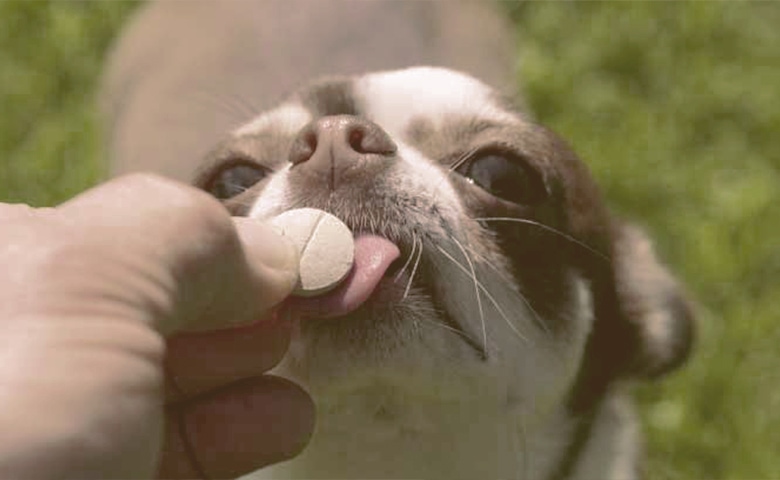
If your dog has extreme separation anxiety and destructive behaviors when you leave the home, it may be time to take more drastic measures. While you can try checking in throughout the day on lunch breaks or hiring help with your pet, this may not get to the bottom of things. However, by consulting a veterinarian, you may be able to get medicinal help.
Overly anxious dogs can highly benefit by taking a medication that is prescribed for these panic attacks. This is something that may be recommended for your dog to take days or it may be something that is used only when you know you are going to be away for a longer or new period of time. You will clearly want to speak to a professional about this in-depth.
Combining an anxiety medication with proper training for your pup can be a great way to lower these negative behaviors and improve their quality of life. It can also lead to a better pet as anxious dogs are often more unpredictable and simply not leaving their life to the fullest. By offering medication, your dog can be more relaxed in its daily life.
Try Installing a Camera
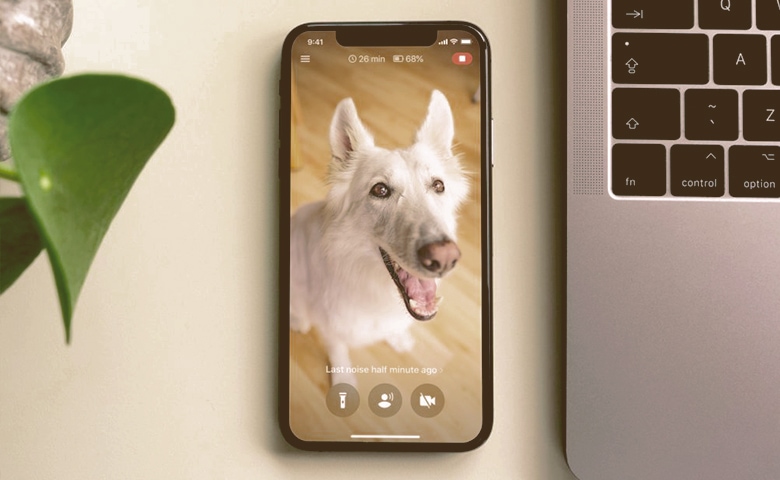
If you are not sure when your dog is primarily scratching or is having trouble seeing the cause of this action, a camera can help. Having a camera installed in your dog’s area often scratches can help you see things you may not see in daily life. You can even take this footage to a professional for more individualized help.
Some things to look for if you do plan to incorporate a camera are:
- How long after you leave is this action happening? – If it is almost immediately, this could be separation anxiety. However, a dog that waits hours before scratching after you leave may simply be bored.
- Is there anything triggering the behavior? – You may find that this scratching begins every day after the mailman arrives. Noises, visitors, sounds, or a variety of other factors can be causing this behavior without your knowledge.
- Do any major changes seem to help? – You may find on a day when your dog had a toy easily available they scratched less. On the other hand, you may find that on a day when you did not have time to walk the dog, it may scratch more.
You can analyze this footage on your own or with professional help to find patterns and better understand your pet. This can help you reduce the number of causes and better understand what is happening when you do not have eyes on your dog. Watching your dog in this way can make treating this negative behavior much simpler.
Be Patient and Stop the Wall Scratching
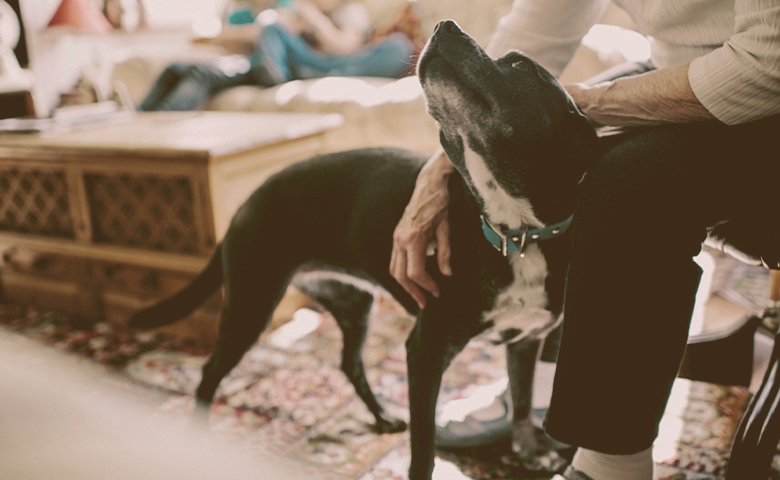
Now you know more about the causes of wall scratching and what you can do to try to solve this issue once and for all. As mentioned, this can be a frustrating process and can cause some aggravation towards your dog, however, it is important to always remember that you can solve these issues and will likely do so with some help.
If you have tried several of the suggestions listed above and your dog is still struggling with this scratching, it is best to seek out professional help. A veterinarian can better understand why may be causing this scratching and give you support on how to solve this. Overall, it can be a bit disheartening but dealing with this unwanted scratching is possible with time and dedication to your pet.

